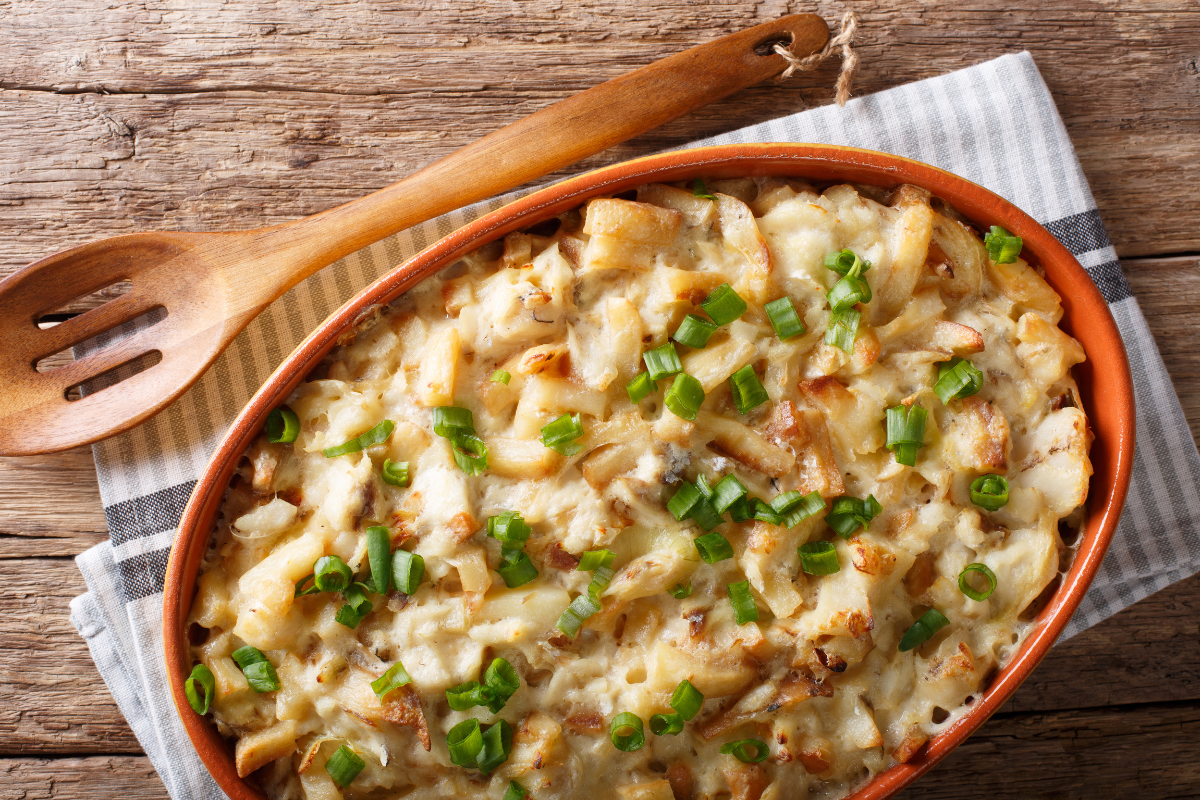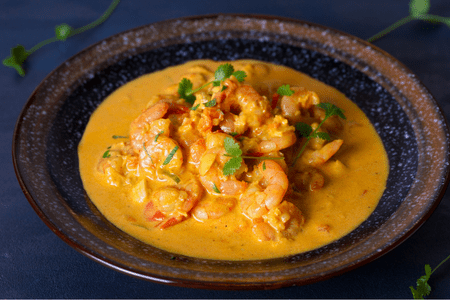
Pavé is a traditional dessert in Brazil. It is made with layers of cream or custard and digestive biscuits soaked in brandy. You can add additional layers of fruit, chocolate, or coconut to make it extra special. One of the best things about Brazilian pavé is that it requires no baking and you can make it ahead of time so you are free to mingle with guests.
What Does “Pavé” Mean?
The layers of the pave cake are said to resemble the latticework of cobblestone streets or walkways. The word “pavé” itself is from the French, meaning “paved.”
Pave vs Trifle
You might notice some similarities between the Brazilian pavé and a traditional English trifle. Both desserts layer cookies with cream or custard. The trifle, however, usually incorporates sponge cookies, or “lady fingers.” Some versions of pavé may also use lady fingers, but digestive biscuits are more common. Traditional pavé also does not have the layers of fruit found in most trifle recipes.
Additionally, trifle is often served in a special dish: a large bowl set atop a stem with a base. It resembles a large goblet or wine glass. Pavé is a shallower dessert and does better in a standard baking dish or casserole.
What Are Digestive Biscuits?
Digestives, or digestive biscuits, are a kind of semi-sweet cookie popular in many parts of the world. They originated in Scotland in the 19th century as a means of aiding in digestion (hence the name). It was thought that the use of baking soda gave the biscuits an antacid property, while malt extract aided in the breakdown of starch.
Today, the digestive is more popular as a tea-time biscuit: perfect for dunking in a sweet cup of Earl Grey in the afternoon.
You can find digestives in most grocery stores in the US. The Maria cookies in today’s recipe are typically found in the international aisle, along with other favorites from Mexico. You can also find them online.
Brazilian Pave Recipe
Ingredients:
5 cups milk
2 cans sweetened condensed milk
4 egg yolks
2 tablespoons cornstarch
1 tablespoon brandy
2 tsp vanilla extract
40 or so Maria cookies (or other digestive biscuits)
1.5 cups heavy whipping cream
1.5 cups confectioner’s sugar
1 cup shredded, toasted coconut (optional)
Ingredients:
- In a large saucepan, whisk together 3 cups milk, 2 cans sweetened condensed milk, the 4 egg yolks, and 1 tsp of vanilla extract.
- Heat the mixture over medium-high until it reaches a rolling simmer.
- Make a cornstarch slurry by mixing another cup of milk and the two tablespoons of cornstarch in a separate bowl or cup. Pour the slurry into the saucepan and whisk to combine.
- Once the custard has thickened, remove the saucepan from the heat.
- Pour a thin layer of the custard to cover the bottom of a baking dish (half an inch or so).
- Mix together the final cup of milk, the brandy, and ½ tsp of vanilla extract.
- Take your Maria biscuits and dunk each in the brandy mixture for a few seconds before layering them over the custard in your baking dish.
- Top the biscuits with another layer of custard, then add another layer of brandy-soaked biscuits.
- Repeat this process until you have four or five alternating layers of biscuits and custard.
- Make the whipped cream topping: in the bowl of a stand mixer, put the heavy cream, powdered sugar, and 1/2 tsp vanilla extract. Whip with a whisk attachment on high until stiff peaks form.
- Top your pavé with whipped cream and sprinkle with toasted coconut, if desired.
- Store leftovers in the fridge for up to one week.
Other Great Brazilian Recipes to Try:



